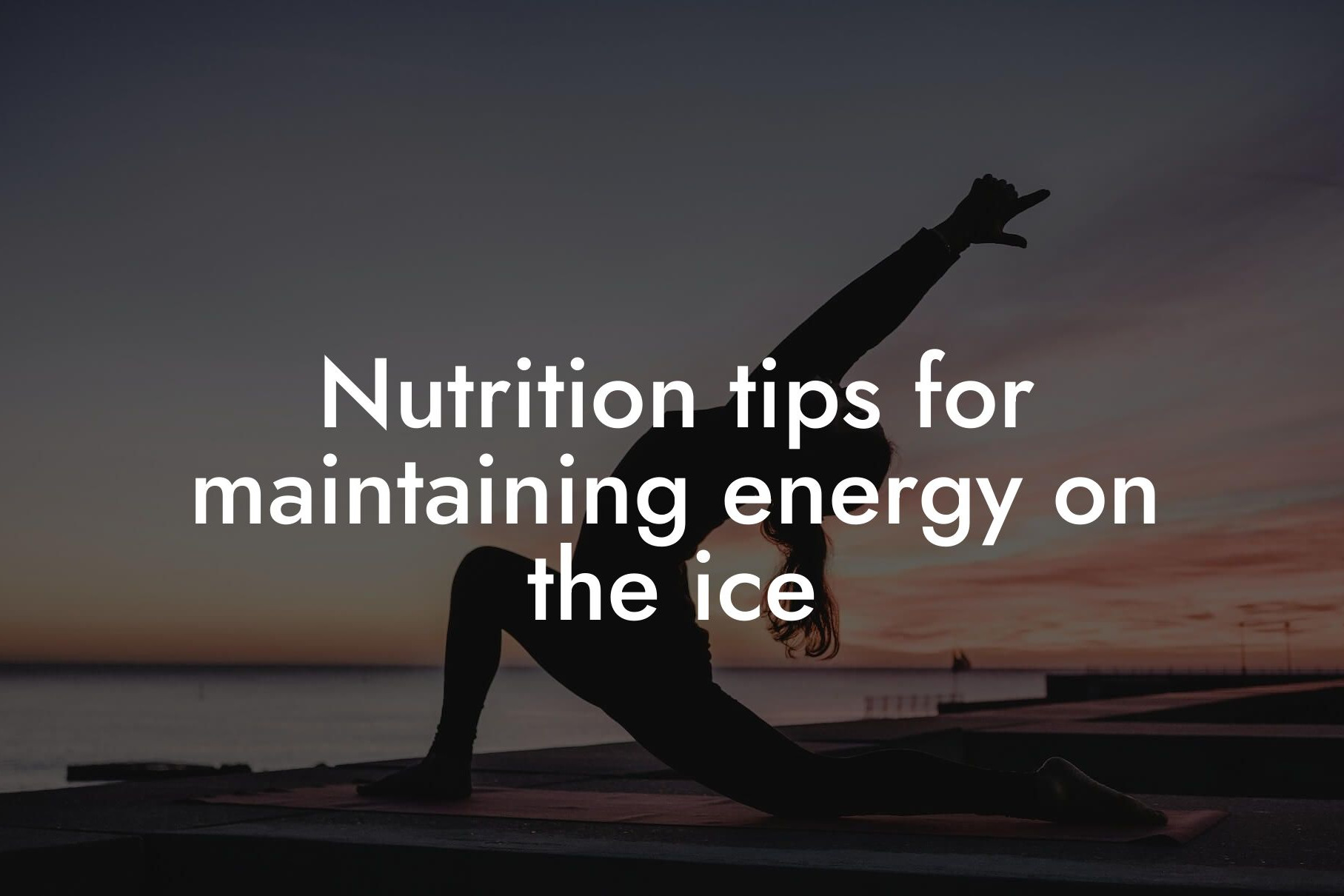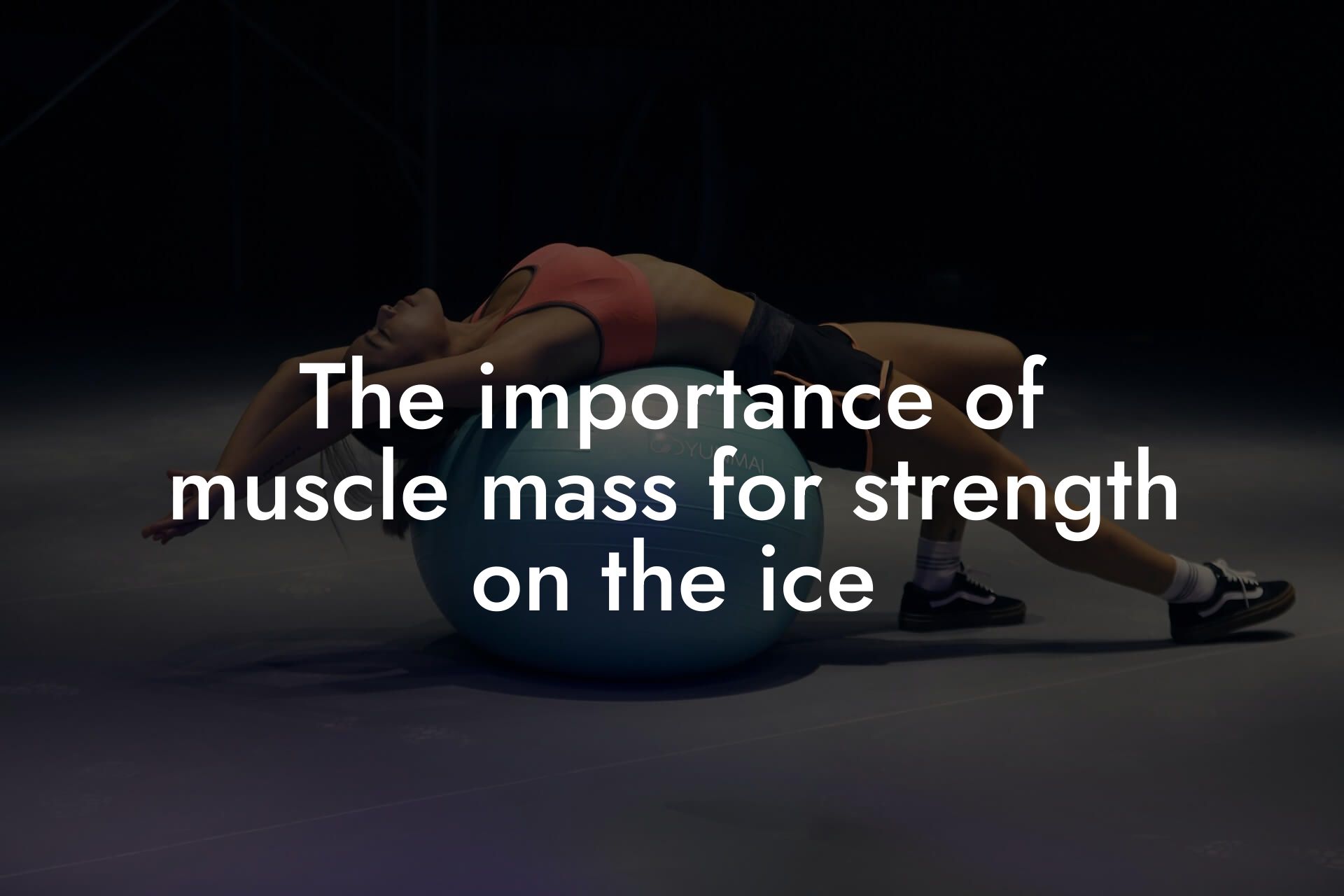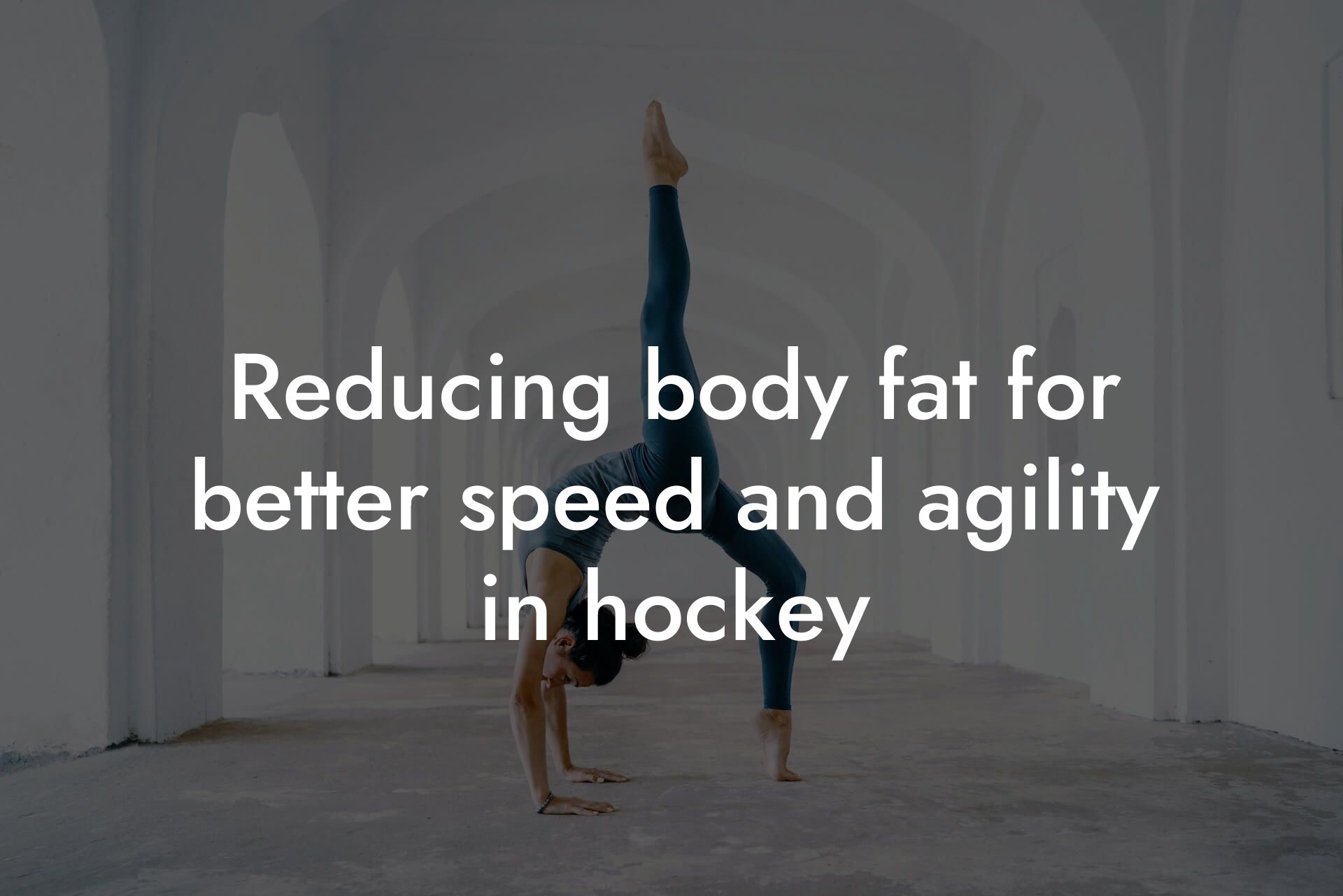As an amateur hockey player, the off-season is a critical period to focus on improving your skills, building your strength and endurance, and preparing your body for the demands of the upcoming season. A well-structured off-season training program can help you gain a competitive edge, reduce the risk of injuries, and enhance your overall performance on the ice. In this article, we'll provide you with a comprehensive guide to off-season training strategies specifically designed for amateur hockey players.
Table of Contents
- Setting Goals and Assessing Your Current Fitness Level
- Building a Foundation of Strength and Power
- Improving Your Speed and Agility
- Enhancing Your Endurance and Conditioning
- Incorporating Plyometric and Power Training
- Flexibility and Mobility Training
- Injury Prevention and Recovery Strategies
- Nutrition and Supplementation Strategies
- Frequently Asked Questions
Setting Goals and Assessing Your Current Fitness Level
Before you start designing your off-season training program, it's essential to set specific, measurable, and achievable goals. What do you want to accomplish during the off-season? Do you want to improve your speed, increase your strength, or enhance your endurance? Identify your weaknesses and areas for improvement, and set realistic goals that align with your objectives.
In addition to setting goals, it's crucial to assess your current fitness level. This will help you understand where you are now and where you need to be by the start of the next season. You can use various fitness assessments, such as the DEXA scan, to evaluate your body composition, bone density, and muscle mass. This information will help you create a personalized training program that addresses your specific needs and goals.
Building a Foundation of Strength and Power
Having a strong foundation of strength and power is essential for hockey players. During the off-season, focus on building your overall strength, particularly in your legs, core, and upper body. This can be achieved through a combination of resistance training exercises, such as squats, deadlifts, and bench press, and plyometric exercises, such as jump squats and box jumps.
Incorporate exercises that mimic the movements and actions you perform on the ice, such as explosive acceleration, deceleration, and changes of direction. This will help improve your power, speed, and agility, allowing you to dominate on the ice.
Improving Your Speed and Agility
Speed and agility are critical components of hockey performance. During the off-season, focus on improving your acceleration, deceleration, and change of direction. This can be achieved through a variety of drills and exercises, such as:
- Agility ladder drills: These drills help improve your foot speed, agility, and reaction time.
- Resistance band training: This type of training helps improve your acceleration and deceleration.
- Plyometric exercises: Exercises like jump squats and box jumps help improve your explosive power and speed.
- On-ice training: Incorporate on-ice training sessions that focus on speed and agility, such as sprints, crossovers, and tight turns.
Enhancing Your Endurance and Conditioning
Hockey is a high-intensity sport that requires a high level of cardiovascular endurance. During the off-season, focus on building your endurance through a combination of aerobic exercises, such as cycling, running, and swimming, and high-intensity interval training (HIIT).
HIIT involves short bursts of high-intensity exercise followed by periods of rest or low-intensity exercise. This type of training helps improve your anaerobic endurance, speed, and agility, allowing you to maintain a high level of intensity throughout the game.
Incorporating Plyometric and Power Training
Plyometric and power training are essential components of off-season training for hockey players. These types of exercises help improve your explosive power, speed, and agility, allowing you to dominate on the ice.
Incorporate exercises like jump squats, box jumps, and depth jumps into your training program. These exercises help improve your power, speed, and agility, allowing you to accelerate quickly, decelerate rapidly, and change direction quickly.
Flexibility and Mobility Training
Flexibility and mobility are critical components of hockey performance. During the off-season, focus on improving your flexibility and mobility through a combination of stretching exercises, foam rolling, and self-myofascial release.
Incorporate exercises that target your hips, groin, and lower back, as these areas are prone to tightness and injury in hockey players. Improve your flexibility and mobility, and you'll be able to move more efficiently on the ice, reducing your risk of injury and enhancing your overall performance.
Injury Prevention and Recovery Strategies
Injury prevention and recovery strategies are critical components of off-season training for hockey players. During the off-season, focus on building your strength, improving your flexibility and mobility, and incorporating exercises that help prevent common hockey injuries, such as groin pulls and shoulder injuries.
Incorporate recovery strategies, such as foam rolling, self-myofascial release, and active recovery techniques, into your training program. These strategies help reduce muscle soreness, improve recovery, and enhance your overall performance.
Nutrition and Supplementation Strategies
Nutrition and supplementation play critical roles in off-season training for hockey players. During the off-season, focus on fueling your body with a balanced diet that provides adequate protein, carbohydrates, and healthy fats.
Incorporate supplements, such as protein powder and creatine, into your training program. These supplements help improve your strength, power, and endurance, allowing you to dominate on the ice.
Additionally, focus on staying hydrated by drinking plenty of water and electrolyte-rich fluids. Proper hydration is critical for optimal performance and recovery.
Frequently Asked Questions
What is the importance of off-season training for amateur hockey players?
Off-season training is crucial for amateur hockey players as it allows them to improve their skills, build strength and endurance, and reduce the risk of injuries. It also helps them to stay ahead of the competition and be better prepared for the upcoming season.
How many months should I dedicate to off-season training?
A typical off-season training program for amateur hockey players can last anywhere from 3 to 6 months, depending on the individual's goals and current fitness level. It's essential to have a well-structured plan in place to ensure progressive overload and adequate recovery time.
What are the key components of an effective off-season training program?
A well-rounded off-season training program for amateur hockey players should include a combination of strength training, power development, plyometrics, agility drills, and conditioning exercises. Additionally, it's essential to incorporate injury prevention and nutrition planning to support overall performance.
How often should I train during the off-season?
The frequency of training during the off-season depends on the individual's goals and current fitness level. A typical training program may consist of 3-4 strength training sessions, 2-3 conditioning sessions, and 1-2 on-ice skill development sessions per week.
What are the benefits of strength training for amateur hockey players?
Strength training is essential for amateur hockey players as it helps to improve power, speed, and endurance. It also reduces the risk of injuries, enhances overall performance, and allows players to maintain a competitive edge.
What are the best exercises for building strength in amateur hockey players?
The best exercises for building strength in amateur hockey players include squats, deadlifts, bench press, rows, and lunges. These exercises target multiple muscle groups and help to improve overall strength and power.
How can I improve my power and explosiveness during the off-season?
To improve power and explosiveness, amateur hockey players can incorporate plyometric exercises such as box jumps, depth jumps, and resisted sprints into their training program. These exercises help to improve acceleration, deceleration, and overall power output.
What is the importance of agility training for amateur hockey players?
Agility training is essential for amateur hockey players as it helps to improve speed, acceleration, and deceleration. It also enhances overall performance, reduces the risk of injuries, and allows players to quickly change direction on the ice.
How can I improve my conditioning during the off-season?
To improve conditioning, amateur hockey players can incorporate high-intensity interval training (HIIT) into their program. This type of training helps to improve cardiovascular endurance, increase speed and agility, and enhance overall performance.
What are the benefits of on-ice skill development during the off-season?
On-ice skill development during the off-season helps amateur hockey players to improve their technical skills, such as skating, passing, and shooting. It also allows players to work on their weaknesses, develop muscle memory, and enhance overall performance.
How can I incorporate nutrition planning into my off-season training program?
To support overall performance, amateur hockey players should focus on consuming a balanced diet that includes lean protein, complex carbohydrates, and healthy fats. Additionally, players should stay hydrated by drinking plenty of water and limit their intake of processed foods and sugary drinks.
What are the common mistakes amateur hockey players make during the off-season?
Common mistakes amateur hockey players make during the off-season include not having a well-structured training program, not incorporating injury prevention exercises, and not paying attention to nutrition planning. These mistakes can lead to poor performance, increased risk of injuries, and decreased overall fitness.
How can I stay motivated during the off-season?
To stay motivated during the off-season, amateur hockey players can set specific goals, track their progress, and find a training partner or accountability group. Additionally, players can reward themselves for reaching milestones and celebrate their successes along the way.
What are the benefits of working with a coach or trainer during the off-season?
Working with a coach or trainer during the off-season can help amateur hockey players to develop a customized training program, improve their technical skills, and stay accountable. Additionally, a coach or trainer can provide guidance on injury prevention, nutrition planning, and overall performance.
How can I incorporate injury prevention exercises into my off-season training program?
To incorporate injury prevention exercises, amateur hockey players can focus on strengthening their core, glutes, and legs. Additionally, players can incorporate exercises that target their shoulders, hips, and ankles to reduce the risk of injuries.
What are the most common injuries in hockey and how can I prevent them?
The most common injuries in hockey include concussions, knee injuries, and shoulder injuries. To prevent these injuries, amateur hockey players can incorporate injury prevention exercises, wear proper protective gear, and focus on proper technique and body positioning.
How can I balance my off-season training with other commitments, such as work and family?
To balance off-season training with other commitments, amateur hockey players can create a schedule and prioritize their training sessions. Additionally, players can find a training program that can be completed at home or on the go, and involve their family and friends in their fitness journey.
What are the benefits of active recovery during the off-season?
Active recovery during the off-season helps amateur hockey players to reduce muscle soreness, improve flexibility, and enhance overall recovery. It can include activities such as yoga, cycling, or swimming, and can be incorporated 1-2 times per week.
How can I track my progress during the off-season?
To track progress, amateur hockey players can use a training log to record their workouts, take progress photos, and track their body fat percentage and weight. Additionally, players can use wearable technology, such as heart rate monitors and GPS trackers, to track their performance.
What are the benefits of mental preparation during the off-season?
Mental preparation during the off-season helps amateur hockey players to improve their focus, confidence, and overall performance. It can include activities such as visualization, meditation, and positive self-talk, and can be incorporated 1-2 times per week.
How can I stay connected with my teammates during the off-season?
To stay connected with teammates during the off-season, amateur hockey players can participate in group chats, schedule team-building activities, and attend training sessions together. Additionally, players can share their progress and goals with their teammates to stay motivated and accountable.
What are the benefits of seeking support from a sports psychologist during the off-season?
Seeking support from a sports psychologist during the off-season can help amateur hockey players to improve their mental toughness, overcome performance anxiety, and develop a winning mindset. Additionally, a sports psychologist can provide guidance on goal-setting, confidence-building, and overall performance.
How can I use technology to enhance my off-season training?
To use technology to enhance off-season training, amateur hockey players can utilize apps that track their workouts, provide training programs, and offer nutrition planning guidance. Additionally, players can use video analysis software to improve their technical skills and wearable technology to track their performance.
Here are some related articles you might love...
- Nutrition tips for maintaining energy on the ice
- The importance of muscle mass for strength on the ice
- Reducing body fat for better speed and agility in hockey
- Recovery techniques for hockey athletes after games
- How body composition affects hockey performance
- Strength and conditioning programs for hockey players
- The benefits of DEXA scans for amateur hockey players
- Balancing strength, speed, and agility in hockey
- Bone density and injury prevention in hockey
Zak Faulkner
Zak Faulkner is a leading authority in the realm of physical health and body composition analysis, with over 15 years of experience helping professionals optimise their fitness and well-being. As one the experts behind Tano Performance Group, Zak has dedicated his career to providing in-depth, science-backed insights that empower clients to elevate their physical performance and overall health.
With extensive knowledge of DEXA technology, Zak specializes in delivering comprehensive body assessments that offer precise data on body fat, muscle mass, bone density, and overall physique. His expertise enables individuals to make informed decisions and achieve their fitness goals with accuracy and confidence. Zak’s approach is rooted in a deep understanding of human physiology, combined with a passion for helping clients unlock their full potential through personalised strategies.
Over the years, Zak has earned a reputation for his commitment to excellence, precision, and client-focused service. His guidance is trusted by top professionals who demand the best when it comes to their health. Whether advising on fitness programs, nutritional strategies, or long-term wellness plans, Zak Faulkner’s insights are a valuable resource for anyone serious about taking their health and fitness to the next level.
At Tano Performance Group, Zak continues to lead our Content Team revolutionising how professionals approach their physical health, offering unparalleled expertise that drives real results.




